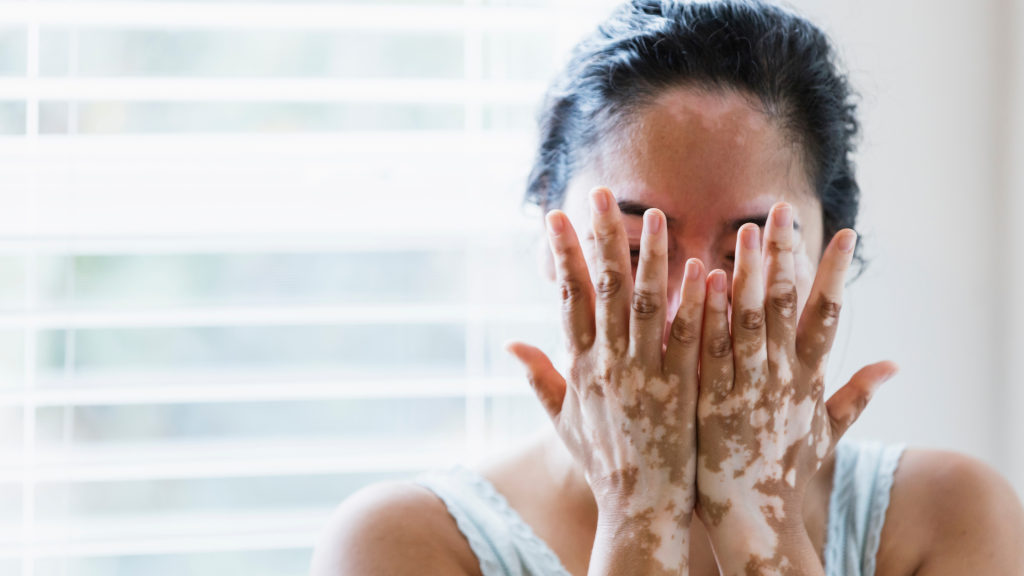Vitiligo is a skin disorder that causes loss in skin color and can emerge out as white patches on your body. In most of the cases, it is seen that it starts from hands, feet & face. Later it may also affect the hairs in some cases. Melanin is behind ensuring the color in skin & hairs. It is a disease that can be more noticeable in a person with dark darker skin.
Symptoms of vitiligo
The places which are mostly affected and can be common areas where vitiligo begins can include:
Eyes
Mouth
Fingers
Genitals
Face
Hairs
Apart from the skin vitiligo sometimes is also noticed to be developed in the areas of your hair scalp of head or eyebrows. Lack of melanin can convert your hairs into grey and later on to white if you don’t take care. Vitiligo generally begins with a small white patch and then gets converted into complete white.
Types of vitiligo
1) Non-segmental Vitiligo: Non-Segmental vitiligo is also called (generalized or bilateral vitiligo), the white patches appear on both parts of the body in symmetry. Generally, these are found in arms, eyes, hands, feet, knees, & elbows. This is the most common vitiligo, which is found in most cases.
2) Segmental Vitiligo: Segmental vitiligo is also called (localized or unilateral vitiligo), in this the white patches are affected only in one part of the body. This is less common in adults, but more common in children.
3) Mucosal Vitiligo: It is caused at the mucous membrane are of the mouth or near the genitals area of your body.
4) Focal Vitiligo: It is a rate type of vitiligo, in this, the patches are in a small area and do not spread to other areas for some years.
Causes of Vitiligo
Vitiligo is caused by a lack of pigment which is known as melanin in your skin. It is produced by the cells called melanocytes, and the main role of it is to give color to your skin.
Genetics: You may get vitiligo by genetics as around 30% of cases have developed this disease from their family.
Autoimmune disorder: It is quite possible that your body’s immune system may start developing antibodies that may destroy melanocytes.
Self-Destruction: It is a kind of defect which occurs in melanocytes that may destroy them on their own.
Treatment of Vitiligo
Although vitiligo does not have a cure. The best way to treat it is by creating a skin tone by the method of repigmentation. Some common measures are camouflage therapy, repigmentation therapy, surgery, micro-pigmentation & light therapy.
Camouflage Therapy: A common way with skin is by using SPF 30 or higher with sunscreen (UVB & UVA). It reduces tanning which ensures that the normal and the affected area looks similar. Some people use hair colors when vitiligo starts affecting their hairs to restore normal color.
Repigmentation Therapy: Corticosteroid is a remedial pill that can be taken orally, or can be applied directly to the skin. This is a slow ongoing process that can take more than 3 months to start reflecting the results. Consult your doctor prior to taking any medication and tell him about your medical history.
Light Therapy: This therapy requires the patient to undergo 2 to 3 sessions every week for some months with Ultraviolet B (NB-UVB). The excimer lasers emit the wavelength of UV light similar to that of UVB, this is preferably given to those who have small patches.
Micropigmentation: This is the method of making tattoos to cover the patch of vitiligo, & hide it in such a manner that it goes unnoticeable.
Autologous Surgery: In this surgery, a part of the skin is taken from one part to cover the part affected by vitiligo.
Suggestions
Anyone who is suffering from vitiligo may undergo stress & anxiety on his appearance when he will go in public, so it is very important for all the people around the patient to never let him feel uncomfortable. Also, we also suggest knowing the experiences of other patients and gaining their knowledge if that helps. In some cases, people do visit a counselor or join a group of people having vitiligo since that makes them more happy & confident.

